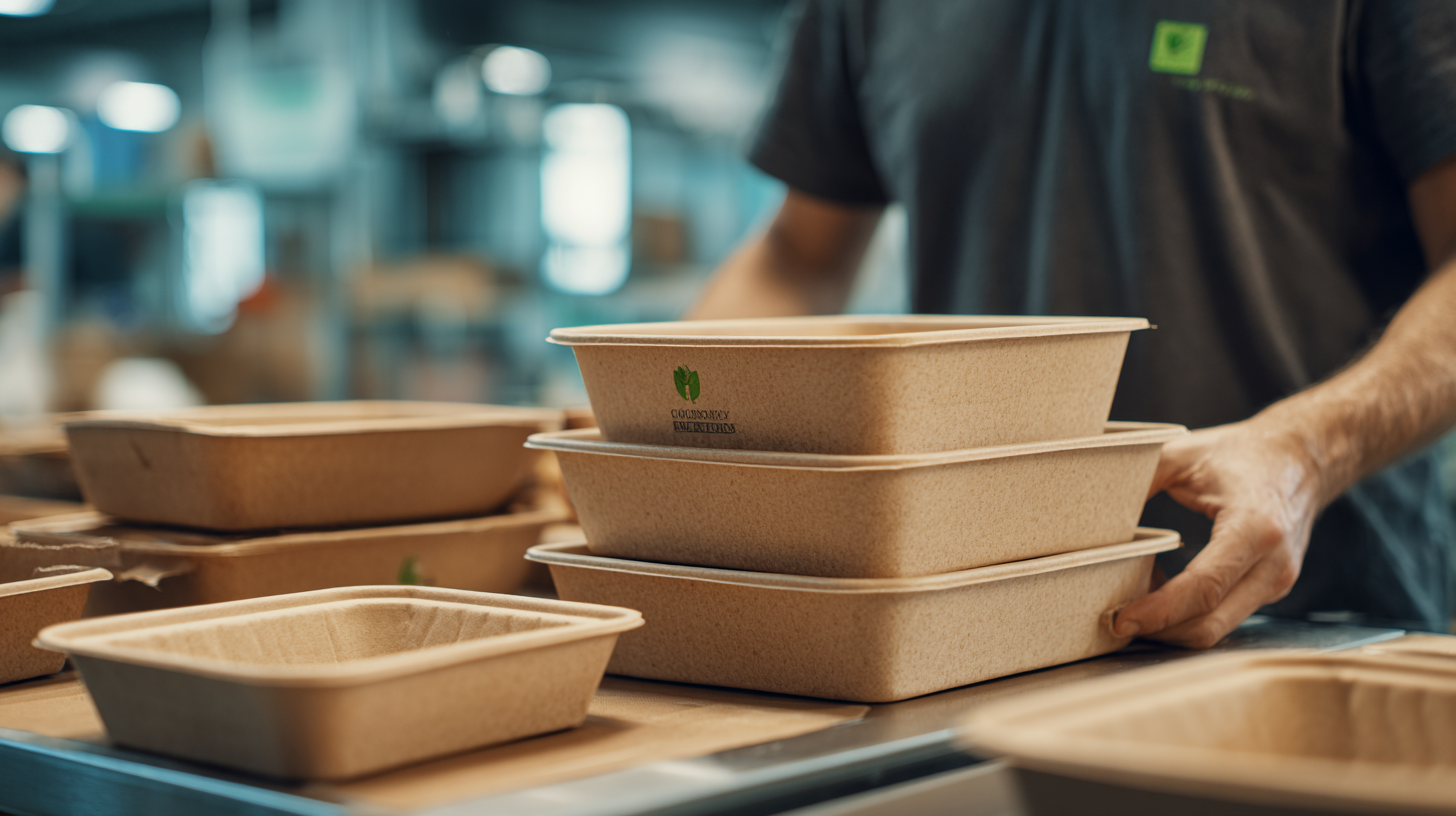In today's rapidly changing world, the quest for sustainable solutions has never been more critical. One of the most promising advancements in this area is the rise of compostable packaging, which offers a viable alternative to traditional plastic materials that contribute significantly to environmental pollution. Compostable packaging is designed to break down into non-toxic components, enriching the soil and minimizing waste in landfills. This innovative approach not only addresses the pressing issue of plastic waste but also promotes a circular economy, where materials are continually reused and repurposed.

As consumers and businesses increasingly recognize the importance of sustainability, incorporating compostable packaging into their practices becomes essential. Not only does it enhance a brand's reputation by showing a commitment to environmental responsibility, but it also aligns with the growing demand among eco-conscious consumers for green alternatives. By understanding the various benefits of compostable packaging, from reducing carbon footprints to fostering biodiversity, we can pave the way for a more sustainable future. This guide will explore the transformative impact of compostable packaging and provide actionable insights on how to effectively implement such solutions in our daily lives and businesses.
Compostable packaging is an innovative solution designed to address the growing concerns surrounding plastic waste and its environmental impact. To qualify as compostable, materials must break down into natural substances within a specified time frame, typically under industrial composting conditions, ensuring they do not leave toxic residues. This definition highlights the importance of both the biodegradability and non-toxicity of the materials used in compostable packaging.
Characteristics of compostable packaging include a variety of materials such as plant-based bioplastics, paper, and cardboard that are designed to decompose efficiently. Unlike traditional plastics, which can persist in the environment for hundreds of years, compostable options can return nutrients to the soil, thereby supporting a circular economy. Furthermore, compostable packaging is often designed to meet specific standards, such as those set by organizations like ASTM International, ensuring they provide environmental benefits without sacrificing functionality or consumer convenience. As businesses and consumers increasingly seek sustainable practices, compostable packaging presents a viable alternative that contributes positively to environmental preservation.
| Characteristic | Description |
|---|---|
| Biodegradable | Breaks down into natural, non-toxic components through biological processes. |
| Renewable Resources | Made from plant materials, supporting a circular economy. |
| Reduced Carbon Footprint | Generates fewer greenhouse gases compared to traditional plastics. |
| Soil Enrichment | Composts add valuable nutrients to the soil when decomposed. |
| Consumer Preference | Increasing demand from environmentally conscious consumers. |
| Compliance with Regulations | Meets growing regulations for sustainable packaging solutions. |
Compostable packaging offers a substantial environmental advantage over traditional plastic options that dominate the market today. Traditional plastics, made from petroleum, take centuries to decompose and often end up in landfills or oceans, contributing to pollution and threatening marine life. In contrast, compostable materials are designed to break down organically in composting facilities, leaving behind nutrient-rich soil. This process reduces landfill waste and decreases greenhouse gas emissions, making compostable packaging a more sustainable alternative.
Moreover, the production of compostable packaging often utilizes renewable resources, such as cornstarch, which not only minimizes dependence on fossil fuels but also promotes agricultural practices. This shift helps bolster local economies and supports sustainable farming.
By choosing compostable options, businesses and consumers can significantly lower their carbon footprint, fostering a healthier planet while addressing the pressing challenges of waste management and environmental degradation. The benefits of compostable packaging extend beyond mere convenience; they serve as a crucial element in the transition towards a circular economy.
Businesses are increasingly recognizing the economic advantages of adopting compostable packaging as a sustainable alternative to traditional materials. As the global organic waste management solution market is projected to reach USD 37.70 billion by 2034, companies that invest in compostable materials can position themselves favorably within this booming market. By aligning with circular economy principles that emphasize resource efficiency and waste elimination, businesses can enhance their brand reputation and appeal to environmentally conscious consumers.
Tips: To maximize the benefits of compostable packaging, businesses should conduct thorough market research to identify consumer preferences and trending eco-friendly practices. Establishing partnerships with composting facilities can also streamline the waste management process, ensuring that the packaging is effectively composted and not ending up in landfills.
Furthermore, adopting compostable packaging can lead to potential cost savings in waste disposal and mitigation of disposal penalties, as seen in recent cases where companies faced fines for overcapacity in waste management. This proactive approach not only avoids regulatory issues but also contributes to a cleaner environment and sustainable supply chains, ultimately driving long-term business success.

Consumer awareness and acceptance of compostable packaging are crucial for driving the shift towards sustainable practices in the packaging industry. Recent studies suggest that consumers are increasingly interested in environmentally friendly options, with 73% of participants in a 2021 survey indicating a preference for products with sustainable packaging. This trend highlights the growing recognition of the detrimental impacts of plastic waste, as 8 million tons of plastic enter the oceans each year. Educating consumers about the benefits and proper disposal methods for compostable packaging can significantly enhance its acceptance and use.
Furthermore, industry reports show that the global compostable packaging market is expected to reach USD 19.3 billion by 2026, growing at a CAGR of 14.3% from 2021. This growth is fueled by rising consumer demand for sustainable products, as well as increasing regulations aimed at reducing plastic waste. Leading brands are beginning to adopt compostable packaging solutions, aligning their practices with consumer expectations and environmental goals. As awareness continues to spread, it is essential for companies to invest in marketing efforts that emphasize the environmental advantages of compostable materials, ultimately contributing to a more sustainable future.

As the food industry continues to evolve, the innovation of compostable packaging is emerging as a critical trend that aligns with sustainability goals. The rise in consumer awareness about environmental issues is driving demand for packaging solutions that not only protect food but also contribute to a healthier planet. Compostable packaging minimizes waste and supports a circular economy, offering brands an opportunity to differentiate themselves in a competitive marketplace.
Future innovations in compostable packaging are expected to focus on enhancing functionality while meeting regulatory standards. This involves developing materials that maintain the freshness and safety of food products while being biodegradable. Regulatory frameworks will likely evolve to ensure that these packaging solutions are safe both for consumers and the environment. As a result, companies that invest in research and development in this area may find themselves at the forefront of the market, ready to capitalize on the shifting preferences of consumers toward sustainable practices.